The grand fir nursery trials project Abies grandis
Vaughan Kearns, New Zealand Tree Grower May 2024.
I will start by saying that if I realised, at the beginning, how hard and how high this hill is to climb, then I may not have started the ascent. If it was not for previous research work carried out by a team which included our patron Eric Appleton back in the 1950s and 1960s and the subsequent measurement work by Charlie Low of Scion, then we would know next to nothing about grand fir and its potential here in New Zealand.
Why are the NZFFA interested in researching this species? The current situation may not need re-telling, but it certainly needs addressing.The Ministry for Primary Industries website with the most current figures, from 2022, shows that 90 per cent of plantation forest is radiata pine.
In the last 20 years hardly any other species has been planted.What is not shown on the website is the quantity of other species which have been liquidated to make even more room for radiata pine in current forests. If current trends continue, when the alternative species currently aged 21 to 30 are removed and replaced with radiata pine, plantation forests will then contain 96 per cent radiata pine.
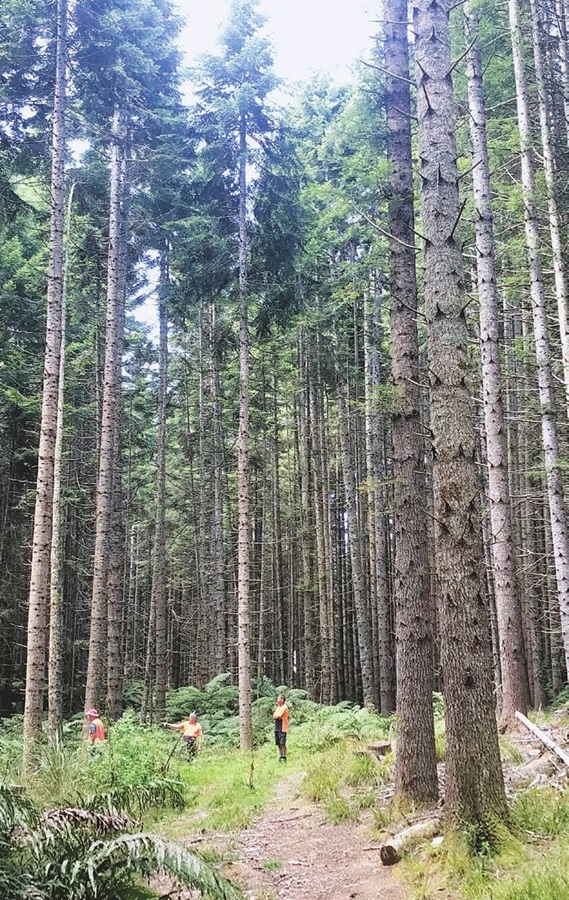
Impossible target
Before the dissolution of the New Zealand Forest Service in the late 1980s, this trend and the biosecurity threat it represents was well understood. Plans were afoot for forest species diversity in the other direction, with a policy in place to plant 20 per cent of alternatives when harvesting took place or new forests were established.
However, once the majority of New Zealand forests were transferred into private and often offshore hands, this policy was immediately abandoned. Now, 30 years later, the new Te Uru Rakau – NZ Forest Service has in place a policy exactly as it was in the 1990s, 20 per cent of alternative species to radiata pine, with a now impossible target of achieving this by in six years by 2030.
One species which could lead the way, one which has timber properties and growth rates very similar to radiata pine, is the grand fir and its close relatives. In terms of processing in sawmills at home, or meeting the demands of log export markets, it would be very easy to swap one for the other. Being an entirely different genus from pine, it is unlikely to succumb to pine pathogens. In fact, pine pitch canker, a real and lethal pathogen of radiata pine, has a very limited effect on productivity of grand fir.
The photograph below is of trees which were planted as one of a series of trials for the Forest Service by a team including our patron Eric Appleton in 1959. This and trials like these are the source of our seeds for the nursery trial.
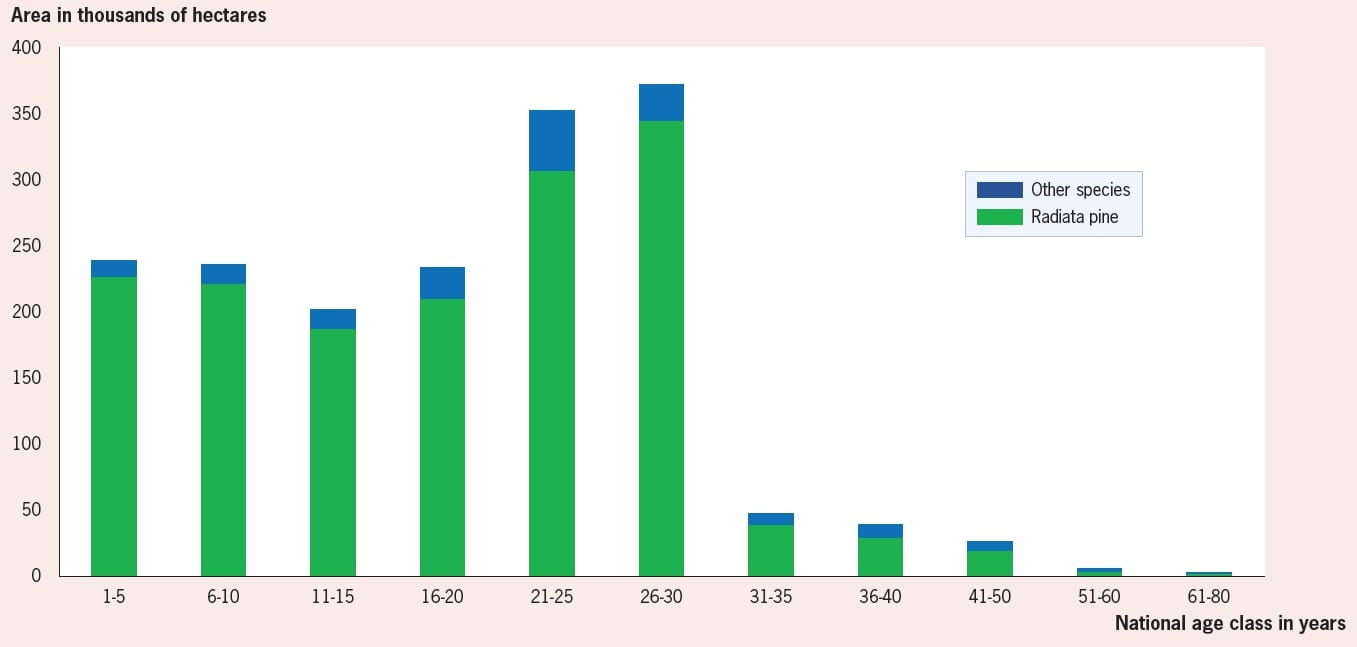
The blockage
Where is the blockage in getting an uptake in this species? It starts at the nursery and in the limited knowledge we have available, with respect to establishing this species in large volume, and at similar cost to that of radiata pine.
The current grand fir Abies grandis nursery trials are a small-scale attempt to solve some of the problems.
The first aim is to collect seed from mature stands, from a range of different provenances – those from various areas overseas with different regions and climates – from trees growing in New Zealand.The potential seed bank is small and seasonally unreliable. Unlike radiata pine or Douglas-fir, grand fir only produces viable cones when the trees are over 25 years of age, and then only every three or four years.This is fine if you do not want wilding spread, but next to hopeless when trying to develop a meaningful seed bank.There appear to be no seeds available in the 2024 season, at least in the North Island locations.
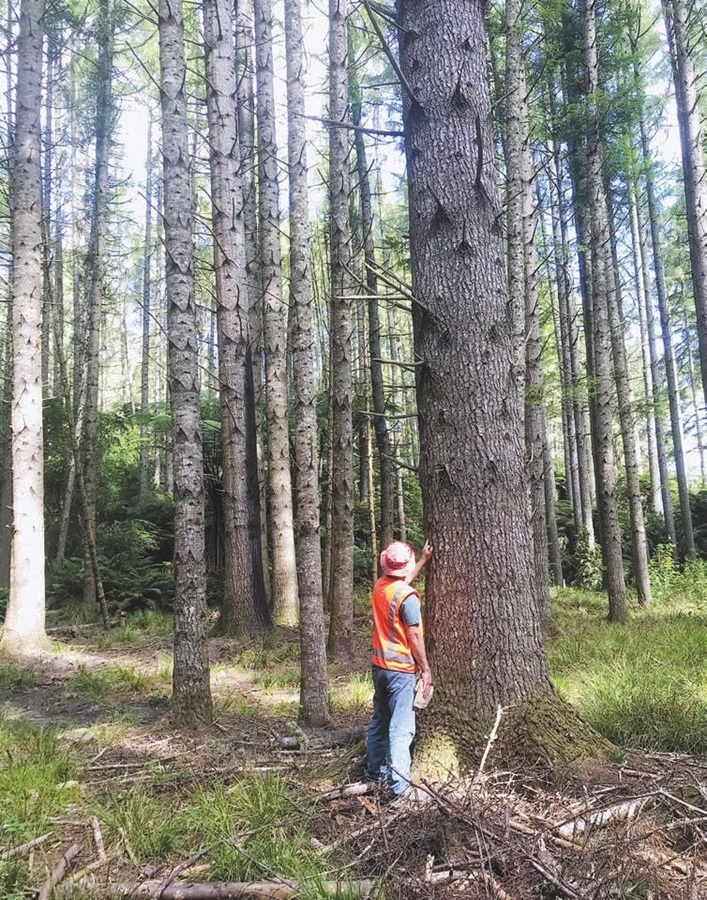
Seed collection
Several methods have been used to collect the seeds and some have more success than others. One feature that we are now well aware of is that the cones ripen over
a few weeks in March, then immediately disintegrate while on the tree. Considering that the cones are often produced 40 metres from the ground, it provides a real challenge to make collections.The next process after extracting the seed from the cones is to clean the debris from the cone scales and then bag them up for the nursery work to begin.
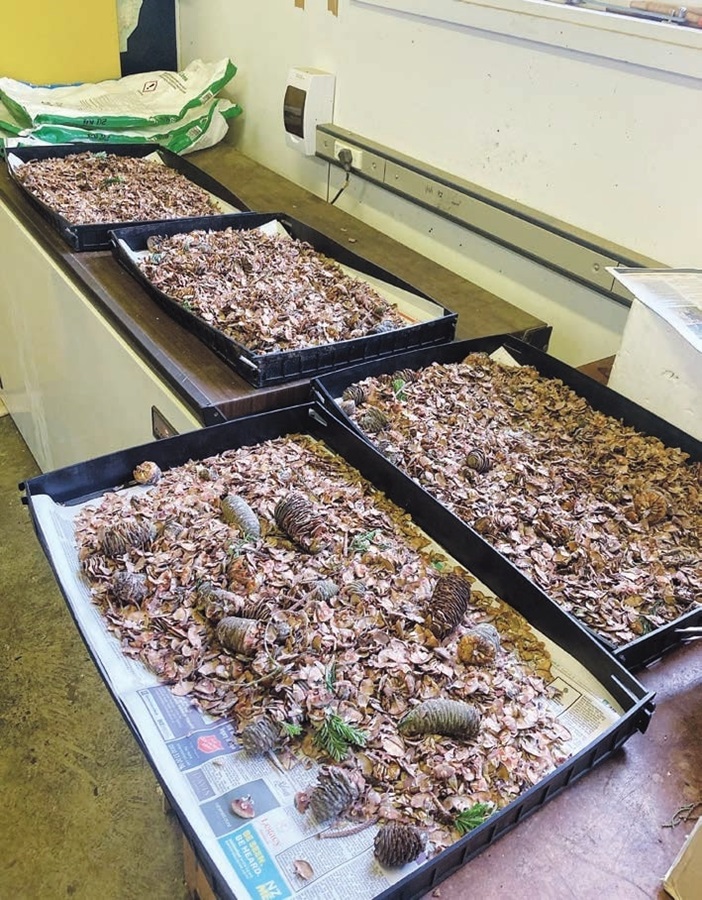
The nursery trials
Several provenances have been collected.These originally came from every part of their natural range on the west side of North America, from Vancouver Island in British Columbia in the north, down to the middle of California in the south. Related species reach right into the southern regions of Mexico.They can be found in coastal locations and also at high altitude in alpine areas.
As luck would have it, Appletons nursery in Wakefield has hired a new nursery manager who originally worked in Oregon. Jacky Friedman has 20 years of work raising grand fir.With Jacky’s experience, it is to be expected that the results of the current research will provide a good platform on which to build our knowledge.
The process
Each of the provenances is proving to have different percentages of fertile seeds. Fortunately, the ones which have the best growth rates of the mature trees, are also the best for germination rates.These provenances are generally from California.The regions tend to have an annual rainfall of 750 mm or less. It suggests that they will be useful in low rainfall areas of the east coast of the North Island and the South Island.
We also know from previous work, that the recently germinated seedlings are not able to be pricked out of germination trays with much success.They need to be sown into the forestry slit trays from the outset.This means that due to poor fertility, four or five seeds must be sown in each cell of the trays and any which produce more than one seedling need to thinned back to one.
This is problematic, wasting potential seedlings from a species where the seed is in short supply. But they do not transplant well.They either die soon after, or sulk for a year or more without growing.
We now know that heated seed beds work best to achieve steady growth rates. This can be by way of heated pads under the rooting medium, but better still is the use of climate controlled hot houses. On the next page is a photograph, taken in March, of grand fir sown in September and October 2023.
Although there are gaps in the trays where seedlings have failed to germinate, those which are well under way are likely to be a suitable size to plant when the season begins in June. It is intended to sow the seed even earlier this year from seeds saved from 2023. Ideally the seedlings will be grown to the required size by March of 2025, then moved outside to harden off before being shipped to the grower.
Mycorrhizae for grand fir
It is well documented that tree roots, in fact all plant roots, benefit from a variety of soil fungi to break down nutrients for the ease of uptake into the vascular system. In the case of firs, it is essential to have a wide variety of fungi available around their roots.When growing grand fir in open beds in the nursery this is not normally a concern because fungal varieties have had decades to build up in those soils. But container-grown plants do not have the same ability to access the beneficial fungi – the mycorrhizae.
This can be improved by top dressing pine duff, the humus layer which builds up in pine forests. One or two dressings sprinkled over the trees seems to be enough. One other method which may be sufficient is to incorporate mycorrhizae in the irrigation system.
There is plenty of evidence to suggest that grand fir seedlings do well when planted on cut-over conifer blocks.These are areas which have previously grown a forest that has been harvested.The mycorrhizae persist in the soil for a long time after the harvest has been completed.
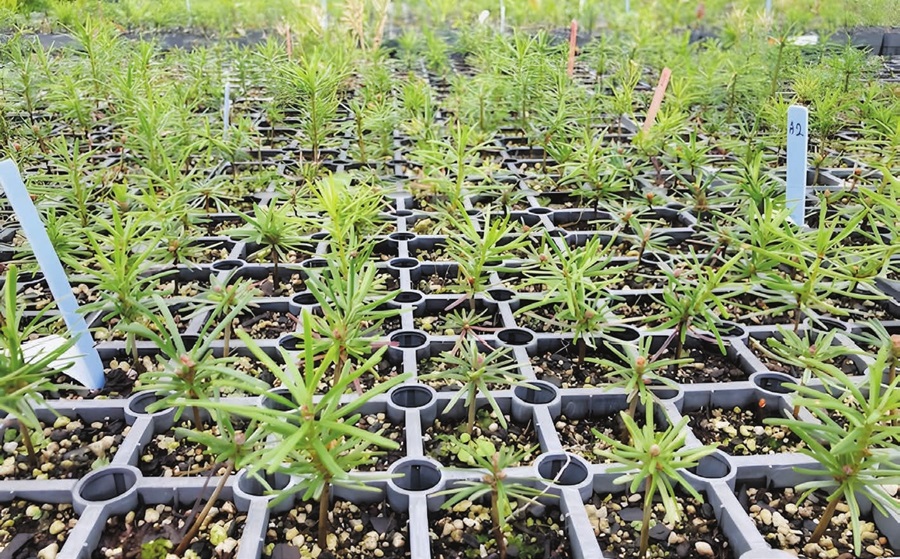
More work
Planting trials of these trees will be essential to provide confidence that we have in fact settled on the most productive and healthy provenances.Work to ensure survival and good growth rates of the young seedlings on forest site, across a range of various conditions will need to be carried out to discover if any pests and diseases are intent on halting the rise of this species.
Another hurdle to overcome is that random trees succumb to a form of root rot after two years of growth in the open ground.We need to find out what factors play a part in this annoying trait and how it can be overcome. Comparative work to match the grand fir seedlings against those of Abies religiosa, A. verjarii and A. concolor will also confirm that we are on the right track with this potential forestry alternative to radiata pine.
If anyone is prepared to have a go at establishing some of these seedlings in their own forest, then please contact me so that I can confirm availability and pricing for the 2024 winter season. Every little bit helps build a picture.
Vaughan Kearns is vice President of the NZFFA and a champion of the Cypress Development Group.
 Farm Forestry New Zealand
Farm Forestry New Zealand